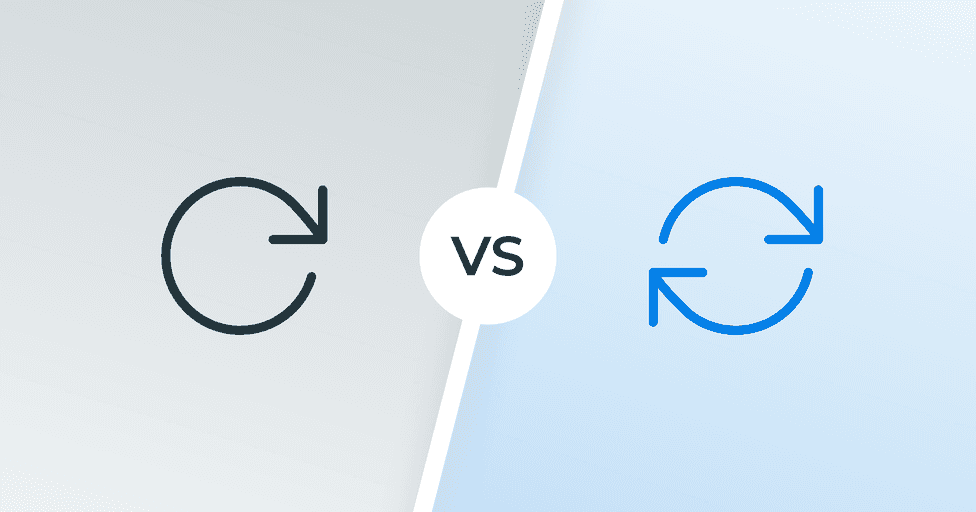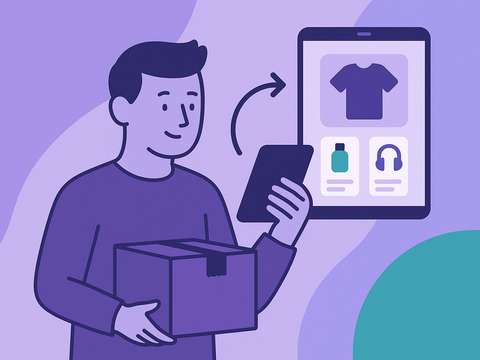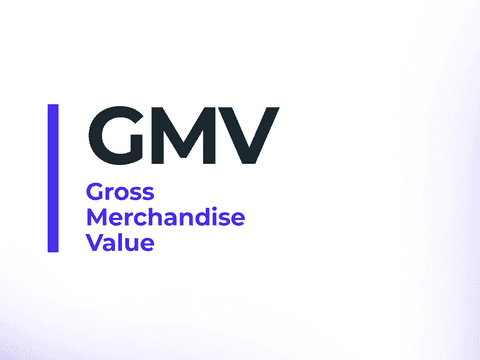Encouraging product exchanges over returns is a highly effective strategy for monetizing customer refund requests. Numerous eCommerce are embracing this approach to address the detrimental impact returns have on profit margins.
Indeed, according to Statista, the loss of revenue due to returns has become a significant concern for retailers. Moreover, 80% of consumers are less likely to return to businesses with complicated return processes.
This dilemma poses a challenge for e-commerce businesses: how to minimize return costs without compromising customer satisfaction.
In Outvio, we are at the forefront of returns and exchange management, and we know these practices inside and out. In the following paragraphs, we will reveal how online stores use exchanges to capitalize on returns, allowing you to apply this strategy in your own business with the help of a returns and exchange management software.

Return vs Exchange in Retail: The Basics
Returns
When a customer returns a product, they are essentially asking for a refund equal to the amount they paid. This usually indicates that the customer is not satisfied with the purchase and is looking to recoup their investment.
Exchanges
In the case of an exchange, the customer chooses an alternative item from the catalog as a replacement. This typically suggests that the customer either selected the wrong size or encountered an error during order fulfillment. It can also be a warranty exchange if the product exhibits quality issues.
In both cases, the customer must adhere to your store's return policy.As an online seller, you will also need to contract with the services of a shipping company and manage the reverse logistics process. The key is that exchanges can be worth more than the original transaction, allowing the store to increase its revenue.
Why Product Exchanges Are Generally More Profitable Than Returns
Product exchanges are a more favorable scenario for your eCommerce business as they allow you to retain revenue and maintain an active customer relationship. In contrast, returns often result in lost revenue and a potential decline in customer satisfaction.
How can returns be turned into an opportunity to generate additional revenue?
When a customer exchanges an item, you don't have to issue a full refund, which means the revenue from the initial purchase remains with your business. You'll simply need to handle the exchange process.
Furthermore, there's a possibility that the customer may choose to add additional products or select a higher-priced item during the exchange process. This boosts the overall order value, turning a return into a new sale and generating additional revenue.
Consider this example:
A customer buys a €50 shirt but decides to return it due to sizing issues. By using ecommerce return solutions you propose exchanging it for a €60 shirt (utilizing a specific function in Outvio return rules that allows for exchanges with items of the same or higher price).
The customer agrees to the exchange, resulting in an additional €10 in profit. Of course, it's important to consider the reverse shipping cost, but this scenario is much more favorable than refunding €50 and incurring losses on shipping expenses.
Therefore, the exchange is more profitable than the return because:
- You retain the initial revenue of €50 from the first shirt sale
- You generate additional revenue of €10 from the sale of the replacement shirt
- You maintain the customer relationship, which could lead to future purchases
| Exchanges | Refunds |
|---|---|
| Reain Revenue | Offer a direct solution |
| Allow for upselling | Provide a sense of security |
| Extend the customer relationship | Do not retain revenue |
| Provide valuable customer data | Increase customer churn |
| Improve brand image | Reduce store cash flow |
| Reduce cost and fraud | Do not allow upselling |
| Improve customer experience | Are more expensive |
How to Encourage Customers to Choose Exchanges
A common challenge for businesses is that many customers prefer refunds, as it gives them complete freedom to spend the money as they see fit. However, there are several strategies you can employ to encourage instant exchanges and boost your business growth:
1. Introduce a Returns Portal
A returns portal serves as a user-friendly platform for customers to initiate and track their return requests. It should be intuitive and clearly outline the steps involved in product returns.
In certain cases, customers may intend to exchange products but abandon the process due to inefficiencies or a lack of automation.
To streamline the process, consider implementing a portal where customers can select their desired exchange and new items. This facilitates a smooth and seamless experience.
2. Create a Returns Policy Favoring Exchanges
Designate a returns policy that prioritizes exchanging products over other refund options. Here are some effective approaches:
- Extend the Return Period: Grant customers ample time to initiate exchanges. Consider extending the standard return period of 14 days to 30 or 60 days.
- Offer Free Exchanges: Eliminate shipping costs for customers when exchanging products. If you typically charge a €1.50 fee for standard returns, make the exchange process entirely free of charge.
Flexible exchange policies not only incentivize customers to choose this option but also demonstrate your commitment to customer satisfaction.
3. Promote Store Credit with Coupons and Offers
An effective tactic to encourage exchanges is to offer store credit as a discount. Provide customers with coupons, such as a 5% discount, which they'll perceive as a valuable opportunity to save money.
While not a direct exchange, this strategy ensures that the refund remains within your business, and there's a chance the customer may make additional purchases. Consider integrating specialized software to make strategic product recommendations, guaranteeing that the total value of suggested items exceeds the refunded credit amount.
This strategy not only retains revenue and decreases the number of returns in your eCommerce, but also opens up the possibility of increasing transaction value.
Recommend to read
Unlock latest strategies and insights about return management by reading our comprehensive guide.
4. Promote Strategic Products
Suggesting relevant alternative products is a powerful way to encourage exchanges and prevent refunds. By offering solutions that address the customer's needs, there's a possibility they'll opt for the alternative product.
Effectively implementing this strategy requires a thorough analysis of return reasons. This will help identify specific customer needs and recommend products that align with them.
5. Analyze Customer Data to Enhance Your Strategy
Examine returns data to identify trends and areas for improvement. This information can help you understand why products are being returned, which items are most commonly returned, and the average return time.
You can also use customer data to segment strategies based on their spending. For example, by showing higher-value items to your users with a higher spend, as there is a greater chance that they will end up purchasing it.
Here is an example of how you could use this strategy:
If you have a new line of high-end products, you could target customers who have a history of spending a lot of money on your store. These customers are more likely to be interested in your new products, so you could show them ads or promotions for them.
6. Allow In-Store Product Exchanges
For many customers, the ease of exchanging products in-store is a significant advantage over waiting for a shipping company to handle the process. By offering this option, you can increase the likelihood of exchanges and potentially boost revenue through additional purchases.
Mastering Exchanges Management for Efficient Retail
Effectively handling return requests is paramount for eCommerce businesses, necessitating the integration of return management software like Outvio.
This tool streamlines the process by cross-referencing RMA request information with available units in your catalog, automatically transmitting data to the warehouse.
This automated flow significantly streamlines retail return and exchange management.
However, choosing a solution that enables 100% automatic return processing is crucial.
Why the emphasis? While many technology providers offer similar services, not all complete the entire process. Some simply generate requests and leave the rest to your support team.
This approach is unsustainable for businesses with high order volumes. When evaluating return and exchange management software options, select a solution capable of fully automating the process, including variables and additional products within the catalog. Without these capabilities, implementing efficient strategies becomes impractical, and your business may struggle to manage returns promptly and effectively.
Total automation not only saves time and resources but also enhances customer satisfaction by providing prompt and accurate resolutions.
Conclusion
The ability to turn returns into exchanges is no longer a mere logistical exercise; it's an opportunity to forge deeper customer relationships, boost revenue, and elevate the overall shopping experience. By implementing robust exchange policies, prioritizing customer satisfaction, offering exclusive incentives, and harnessing the power of data-driven insights, businesses can navigate the eCommerce exchange landscape with acumen and success.
Every return presents a chance to recapture the customer's interest and retain their valuable patronage. By converting returns into exchanges, businesses can transform disgruntled customers into loyal advocates, fostering long-lasting relationships and generating repeat business.




